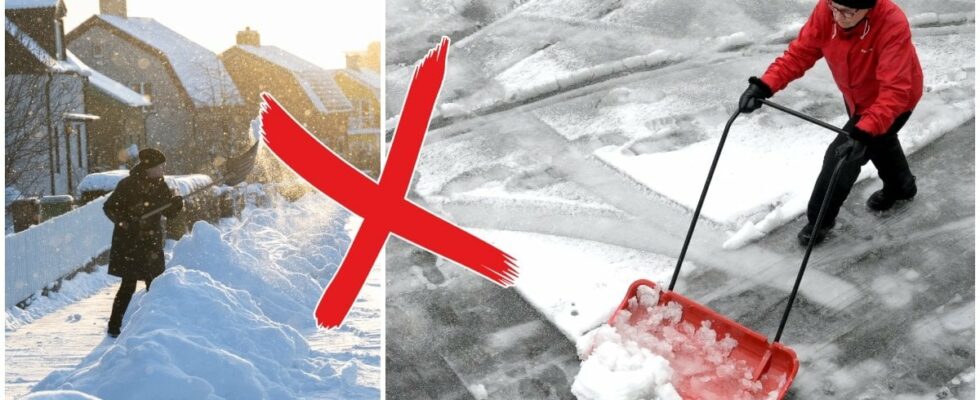When winter arrives and the snow falls around the country, there will not only be more to do for all the municipalities’ snowplows, but also for private individuals who have to shovel away snow in connection with properties.
But there’s a lot to think about when you head out to scoot.
DON’T MISS: Homeowners can be fined – here’s why
Photo: Mats Andersson/TT
READ MORE: Snow on the roof can cost you dearly – then the insurance will be void
This is how you can injure yourself when shoveling snow
In connection with snow shoveling, it is easy to get injured. When News24 talking to Hans Lindholmspecialist doctor at Min Doktor, he raises several risks, including sudden overload.
– Many back shots occur during unexpected movements, such as throwing heavy snow or lifting snow from an uneven surface. This can cause muscle cramps or pain from joints and ligaments, which is the body’s way of protecting itself against further damage, he says and continues:
– Bending the back a lot or working in twisted positions can lead to locking and pain in the lower back.
DON’T MISS: 15 things you should ALWAYS have in your car in winter
Photo: Henrik Montgomery/TT
Snow shoveling can also lead to overexertion.
– If you shoot for too long without a break, the muscles can tire, which increases the risk of incorrect movements and injuries. This applies especially if you are not used to physical activity, says Lindholm and states that the cold also increases the risk of injuries:
– Cold muscles and joints are more susceptible to injury. Make sure to dress warmly to keep your body warm and moving.
Avoid injuries through preventive measures
But injuries can be avoided. According to Hans Lindholm, several preventive measures can be taken to reduce the risk of injury.
For example, he emphasizes using the right technology and ergonomic tools.
– To reduce the risk of back injuries and other injuries, it is important to use a gentle lifting technique. Bend your knees, keep your back straight and avoid twisting your upper body when lifting and throwing snow. A twist in combination with a heavy load is a common cause of acute back pain, he says and continues:
– Choose a snow shovel with a curved handle and light scoop. It reduces the strain on the back and joints. Avoid filling the bucket with too much snow. It is better to take more light loads.
Photo: Mats Andersson/TT
READ MORE: When do you have to have winter tires? Rules, pattern depth and fines
Warming up, with some light exercises such as side bends, before shooting is also a good idea. You are also right in planning the work, so that shoveling takes place regularly. In this way, the snow does not have time to become too heavy.
Lindholm also highlights the importance of slip prevention.
– Use shoes with a good grip or anti-slip to reduce the risk of fall injuries. Falling on ice can lead to both back problems and other injuries.
“Give the body time to recover”
Once you have cleared the snow and come inside, it may be time to stretch. This is to avoid muscle tension and stiffness. According to Hans Lindholm, a naprapath or physiotherapist can help with exercises that can be helpful in preventing back injuries.
Going for a short walk or doing gentle movements can increase blood circulation and speed recovery. Even heat, for example from a heating pad, can help the muscles to relax.
– Drink water to rehydrate and give your body time to recover. If you experience persistent pain or discomfort, avoid further exertion and consider contacting a physiotherapist, says Lindholm.
Photo: Christine Olsson/TT
When should you be careful or even seek help?
– By following this advice, you can reduce the risk of back problems and increase the chance that snow shoveling will be a gentle activity for the body, notes Lindholm.
READ MORE: News today – current news from Sweden and the world
DON’T MISS: Latest news – take part in what’s happening right now
